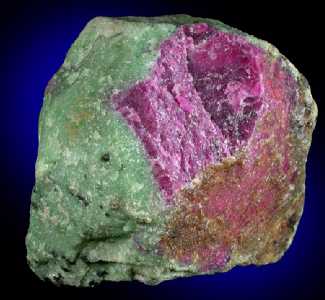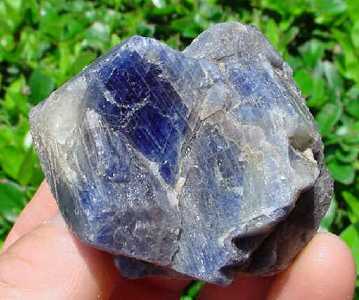 SKC Films Library |
| SKC Films Library >> Science >> Geology >> Mineralogy |
| Corundum [ko run' dum] a transparent to translucent mineral which is found in white, blue, red, yellow, green, brown, purple, and pink forms, as well as in colorless forms corundum crystal Chemically, corundum is alumina, or aluminum oxide, Al2O2. Its distinguishing characteristic is its hardness, which is next to that of diamond and is rated 9 on Mohs' scale. Corundum crystals are six-sided and are often found as tapering hexagonal bipyramids, rounded into barrel shapes. Next to silica, alumina is the most abundant oxide in the earth's crust. It is usually found in igneous rocks deficient in silica. During the crystallization of magma, alumina ordinarily would combine with silica and other oxides to form feldspars. If, however, the magma lacks silica, corundum crystallizes out during solidification. There are notable deposits in Myanmar, Sri Lanka, and India, as well as in several African localities, Middle Eastern and Southeast Asian countries, and in North Carolina and Montana in the United States. The various colors of corundum are due to impurities. When chromium oxide is present, corundum is red and is known as ruby. The deep red ruby is a very valuable gem stone. Other impurities result in a blue color, and the mineral is called the sapphire. Varieties which have a stellate opalescence when observed in the direction of one of the crystal axes are called asteriated and are more popularly known as star sapphires or star rubies. corundum ruby corundum sapphire Corundum was once extensively used as an abrasive because of its hardness, but has been replaced in many applications by artificial corundum made from bauxite at high temperatures. Emery is a fine-grained mixture of corundum and magnetite. It is still used in the manufacture of some grinding wheels. SEE ALSO |
| SKC Films Library
>> Science >> Geology >> Mineralogy This page was last updated on 10/25/2017. |


